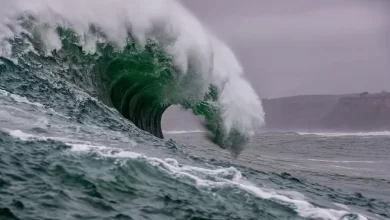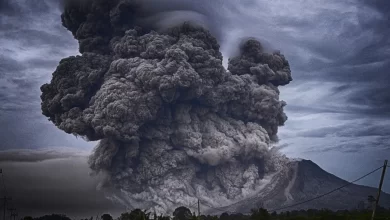Beaches, nature’s serene canvases, hold a timeless allure for both relaxation and adventure. The gentle rhythm of waves caressing the shore, soft sands inviting barefoot strolls, and endless horizons merging with the sky create an enchanting ambiance. Beaches offer a spectrum of experiences, from tranquil hideaways for quiet contemplation to vibrant hubs for water sports and socializing. These natural wonders cater to diverse preferences, from the thrill of surfing and snorkeling to the blissful tranquility of sunbathing and gazing at the horizon. Whether framed by towering cliffs, swaying palm trees, or bustling promenades, beaches encapsulate the beauty and harmony of the natural world, inviting us to unwind and immerse ourselves in the soothing embrace of coastal enchantment.
- Beaches are dynamic landforms shaped by the continuous processes of erosion and deposition. Waves and currents erode coastal land and transport sediment, creating the sandy shores we recognize.
- The composition of beach sand varies based on the local geology. It can consist of crushed shells, rocks, coral, and minerals, which contribute to the unique color and texture of each beach.
- Tides, caused by gravitational forces from the moon and sun, play a crucial role in shaping beaches. High tides deposit sand, while low tides expose rocky areas and may contribute to erosion.
- Beaches provide habitats for various marine life forms, including crabs, mollusks, shorebirds, and marine vegetation that contribute to the ecosystem’s health.
- Longshore drift, a process where waves move sediment along the coast, influences the shape and size of beaches. This movement can lead to the creation of sandbars and spits.
- Human intervention often involves beach nourishment, where sand is added to eroded shorelines to widen and restore beaches. This practice helps protect coastal communities from erosion and storm surges.
- Many species of sea turtles choose beaches as nesting sites. They lay their eggs in sandy nests, which hatch into hatchlings that instinctively make their way to the ocean.
- Beaches offer a wide range of activities, including swimming, sunbathing, picnicking, beach volleyball, snorkeling, scuba diving, and water sports like surfing and jet skiing.
- Healthy beaches and coastal dunes act as natural buffers against storm surges and hurricanes, absorbing and dissipating the energy of waves.
- Beaches are major tourist attractions, driving local economies through tourism-related activities, accommodations, and hospitality services.
- Rising sea levels due to climate change can lead to increased erosion and the loss of beaches. It also threatens coastal communities and ecosystems.
- Plastic pollution is a growing concern on many beaches, as litter and microplastics can harm marine life and ecosystems.
- Beaches hold cultural importance for many societies, often representing relaxation, leisure, and a connection to nature.
- Beaches can take various forms, including sandy beaches, rocky beaches, pebble beaches, and even black sand beaches formed by volcanic activity.
- Spending time on beaches requires sun safety practices due to the risk of sunburn and skin damage. Using sunscreen, wearing hats, and seeking shade are essential precautions.
- Beaches have distinct profiles that include the foreshore (the area between the high tide and low tide marks), the backshore (the area above the high tide mark), and the nearshore zone (where waves break and shallow waters extend).
- Barrier islands are long, narrow landforms parallel to the mainland, protecting the coast from waves and storms. They often have beaches facing the ocean and lagoons on the inland side.
- Coastal dunes, made up of sand and stabilized by vegetation, act as natural barriers against erosion. They play a crucial role in protecting inland areas from storm surges.
- Some beaches, like Mosquito Bay in Vieques, Puerto Rico, exhibit bioluminescent phenomena, where the water glows blue or green due to the presence of microorganisms that emit light.
- In some cases, old ships and other structures are intentionally sunk near beaches to create artificial reefs. These structures provide habitats for marine life and can enhance beach tourism.
- Lifeguards, warning flags, and safety regulations are implemented on many beaches to ensure the well-being of beachgoers and prevent accidents.
- Adding sand to eroded beaches (beach nourishment) can be challenging due to the need for compatible sediment and the potential environmental impact of the process.
- The Blue Flag certification is an international eco-label awarded to beaches that meet high standards for water quality, safety, and environmental management.
- Some beaches exhibit unique colors due to the presence of specific minerals or geological formations. For instance, Pink Sand Beach in the Bahamas gets its hue from pink coral fragments.
- To combat erosion, various techniques are used, such as constructing seawalls, groins, breakwaters, and planting beach grasses to stabilize dunes.
- Coastal communities often engage in beach preservation efforts to maintain the natural beauty and ecosystem services of their beaches, while also ensuring their economic value.
- Pollution from plastic debris, oil spills, and sewage can degrade the quality of beaches, impacting marine life and posing risks to human health too.
- Coastal ecosystems, including beaches, are crucial habitats for a variety of plants and animals, including specialized species that have adapted to the challenging conditions.
- Different beaches may have specific rules and regulations, such as restrictions on alcohol consumption, pets, and camping, to maintain cleanliness and safety.
- Many coastal plants and animals have evolved unique adaptations to survive in the harsh beach environment, including salt tolerance and the ability to withstand strong winds.






